The Grianan of Aileach is an ancient hillfort that stands atop the Greenan Mountain on the Inishowen Peninsula in County Donegal, Ireland. This stone fortress, with its origins shrouded in both history and legend, dates back to the early medieval period. It is believed to have been a seat of power for the Kingdom of Aileach, which ruled over parts of Ulster and beyond. The site offers panoramic views of the surrounding countryside, including Lough Foyle and Lough Swilly, making it a strategic location for both defense and control. Over the centuries, the Grianan of Aileach has captured the imagination of visitors with its impressive dry-stone construction and its evocative presence in Irish lore.
Get your dose of History via Email
Historical Background of Grianan of Aileach
The Grianan of Aileach is steeped in history, with its roots reaching back to the Iron Age. It was an important ceremonial and strategic site for the Northern Uí Néill, a powerful Gaelic dynasty. The hillfort itself is thought to have been built or at least refurbished in the 6th or 7th century AD, although the site may have been in use since around 1700 BC. The structure we see today is the result of 19th-century restoration efforts.
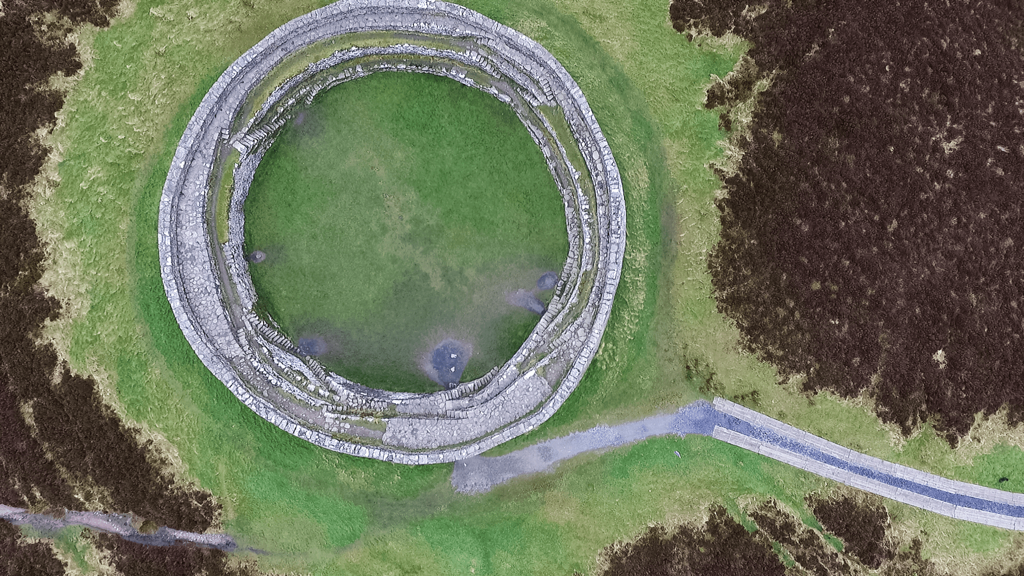
Local legend credits the construction of the Grianan to the Dagda, a god in Irish mythology. However, historians attribute it to the high kings of the Uí Néill dynasty. The fortress has witnessed numerous historical events, including invasions and battles. It was the royal citadel of the Kingdom of Aileach until it was destroyed by the Murtagh O’Brien, King of Munster, in 1101 AD.
Despite its destruction, the site continued to hold significance. It was rediscovered and brought to scholarly attention in the 19th century by Dr. Walter Bernard. The hillfort was then restored by Dr. George Petrie in 1870, who aimed to preserve its historical value. This restoration has been both praised for its intent to conserve and critiqued for its historical accuracy.
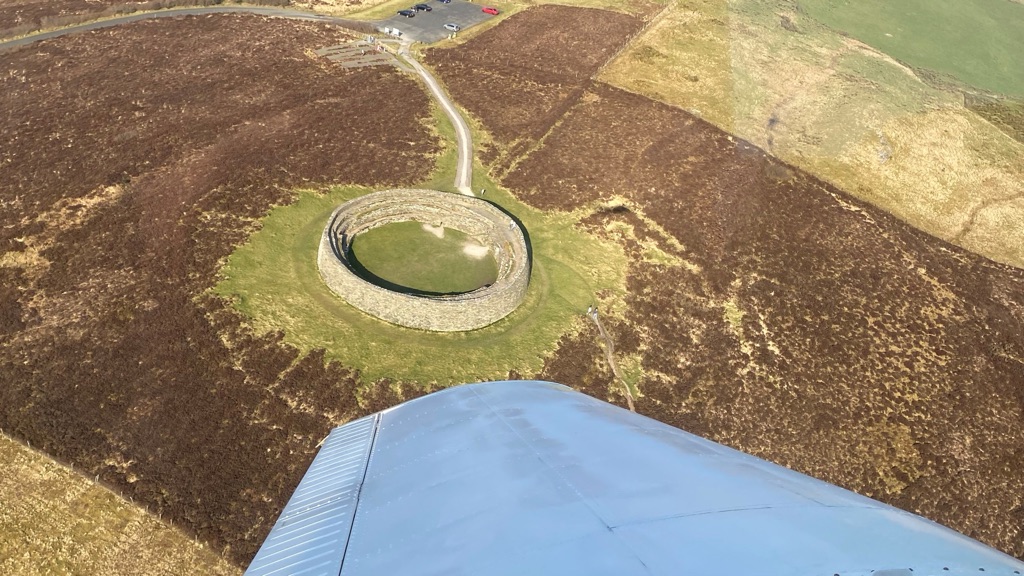
After the restoration, the Grianan of Aileach became a symbol of Irish nationalism, reflecting the country’s rich history and resilience. It has also been a source of inspiration for poets and artists, who have been drawn to its ancient allure and commanding presence.
Today, the Grianan of Aileach is a protected national monument. It continues to be a place of cultural importance and a popular tourist attraction, offering a tangible connection to Ireland’s distant past. The site also plays host to various cultural events and gatherings, celebrating its historical and mythological heritage.
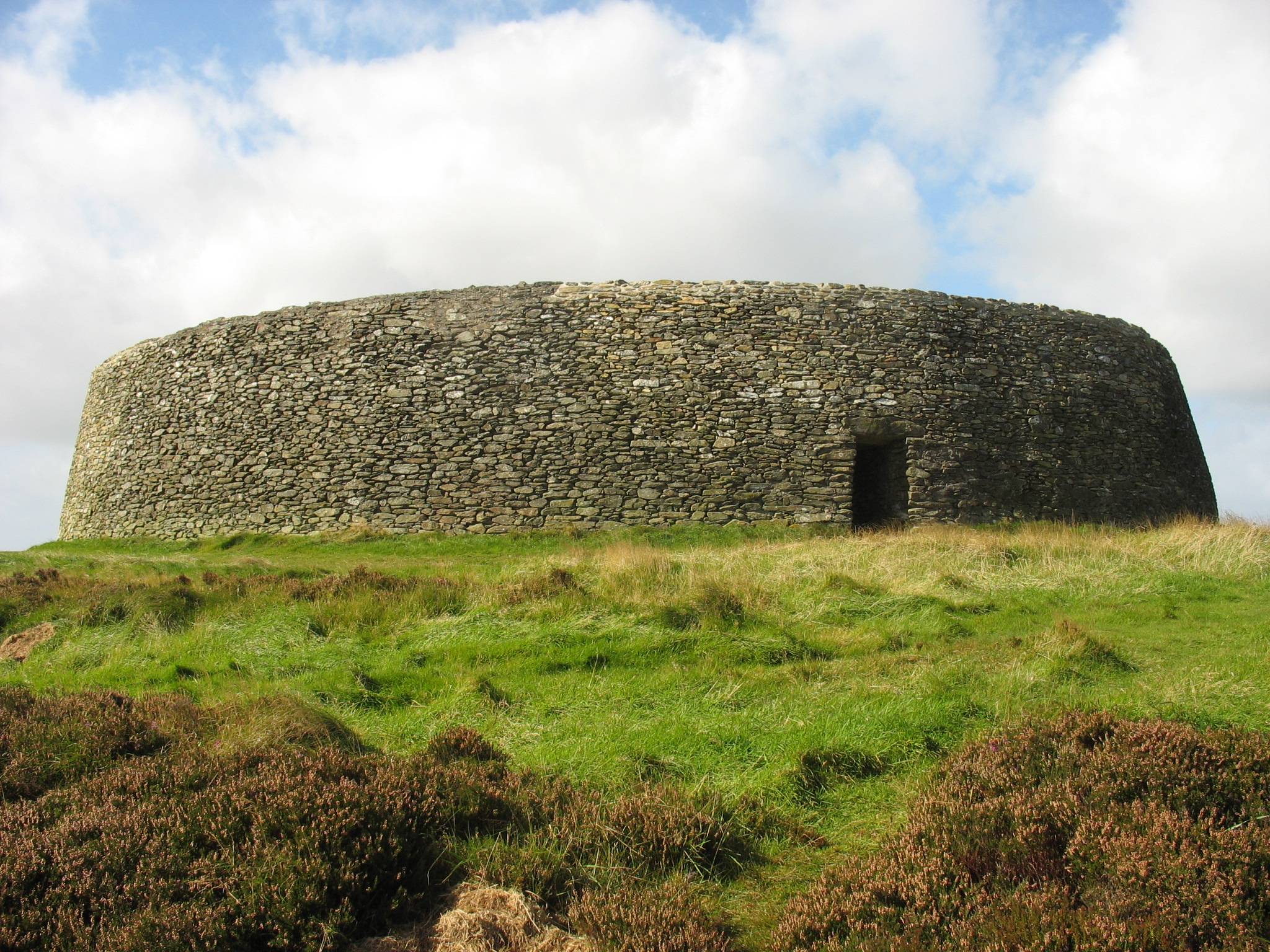
About Grianan of Aileach
The Grianan of Aileach is a circular stone fort, perched nearly 250 meters above sea level. Its walls are up to 4.5 meters thick and 5 meters high, forming a ring with a diameter of 23 meters. The structure is made of locally sourced stone, assembled without mortar in the dry-stone tradition.
Inside the fort, there are three terraces, which are accessible by steps built into the walls. The interior space would have likely been used for ceremonial or domestic purposes, with evidence of hearths and other features. The entrance to the fort aligns with the sunrise around the time of the equinoxes, suggesting an astronomical significance.
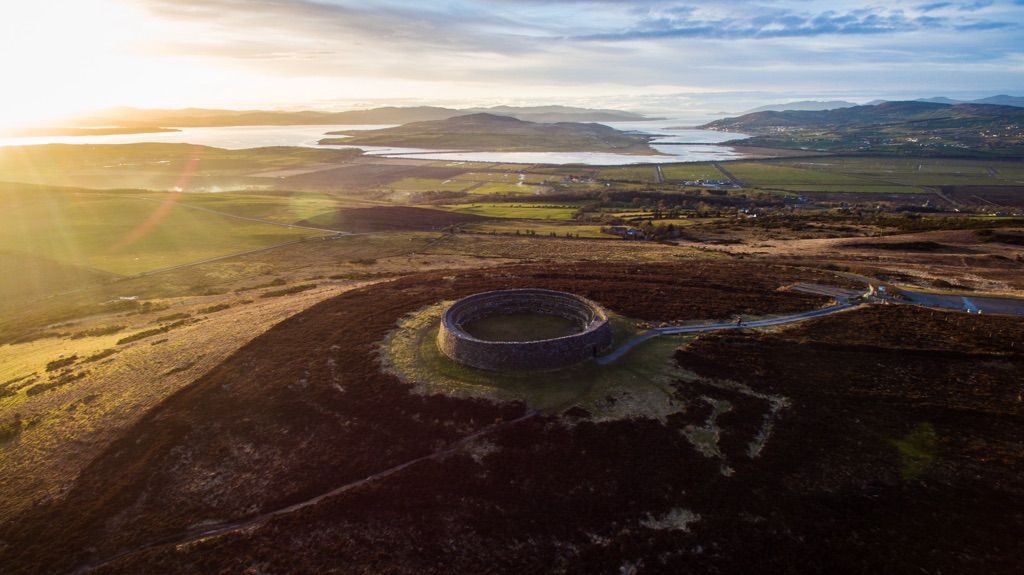
The fort’s design includes a series of concentric earthworks surrounding the main stone structure. These earthworks, or banks and ditches, would have added extra layers of defense, making it a formidable stronghold. The craftsmanship of the fort is remarkable, with the corbelled technique used to create a partial dome in the interior chamber.
Archaeological excavations have revealed artifacts such as pottery shards, metal objects, and animal bones. These finds provide insights into the daily life of the inhabitants and the fort’s role in trade and commerce. The site’s strategic location also implies its use as a lookout point and a place of refuge during times of conflict.
The Grianan of Aileach’s architecture is not only functional but also symbolic. Its circular shape may represent eternity and the cyclical nature of life, common themes in Celtic spirituality. The fort’s commanding view and enduring presence continue to make it a powerful symbol of the region’s history and culture.
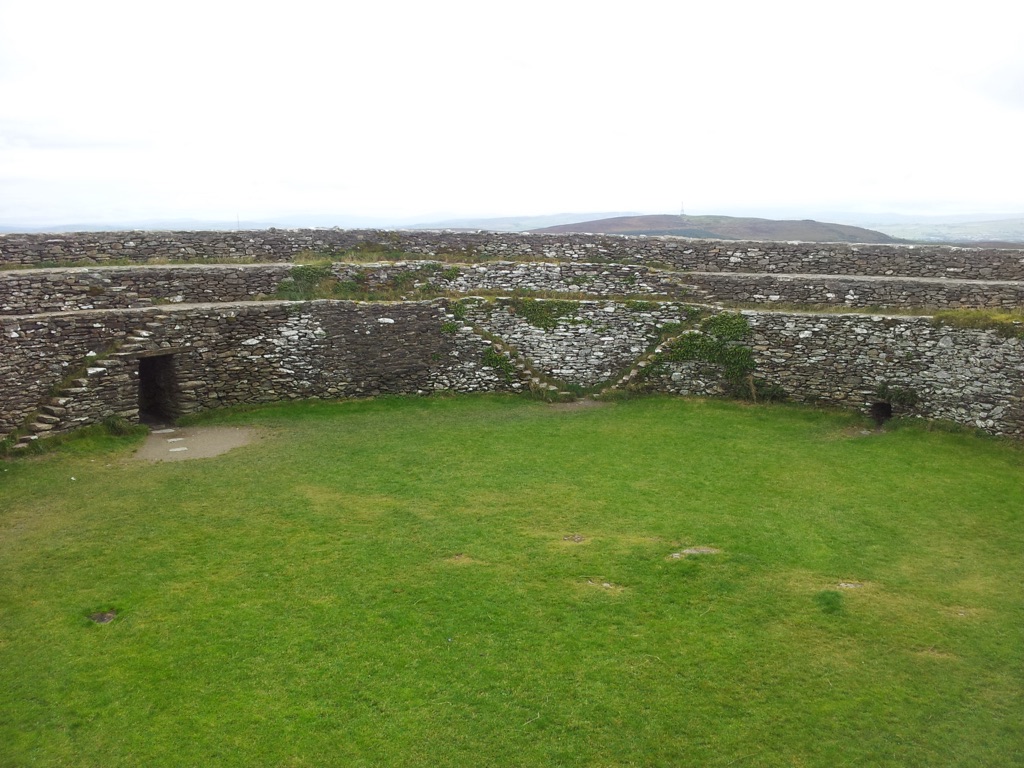
Theories and Interpretations
Several theories surround the Grianan of Aileach, reflecting its complex history and the blend of fact and myth that characterizes many ancient sites. One theory suggests that the fort was a temple or a place of worship, given its alignment with the equinoxes and its commanding position in the landscape.
Another interpretation is that the Grianan served as a royal stronghold for the ruling elite. This is supported by historical records that mention the site as a seat of power for the Kingdom of Aileach. The presence of domestic features within the fort also points to its use as a residence.
Some scholars have debated the accuracy of the 19th-century restoration, questioning whether the current structure truly reflects the original design. Despite these debates, the restoration has been crucial in preserving the site for future generations.
Archaeological methods, including radiocarbon dating, have been employed to determine the age of the site. These techniques have helped to confirm the long history of the Grianan, although many details of its past remain shrouded in mystery.
The Grianan of Aileach continues to be a subject of study and fascination. Its blend of historical significance and mythological associations makes it a rich source for interpretation and storytelling, capturing the imagination of all who visit.
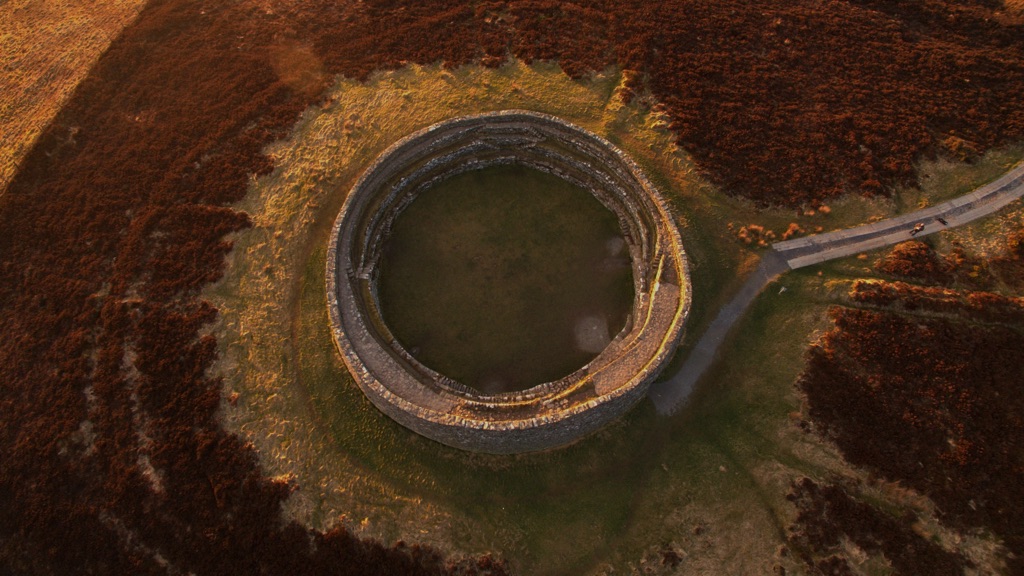
At a glance
Country: Ireland
Civilization: Kingdom of Aileach, Northern Uí Néill
Age: Early medieval period, with origins possibly as far back as 1700 BC
Conclusion and Sources
Reputable sources used in the creation of this article include:
- Wikipedia: https://en.wikipedia.org/wiki/Grianan_of_Aileach
- The Heritage Council of Ireland: https://www.heritagecouncil.ie/

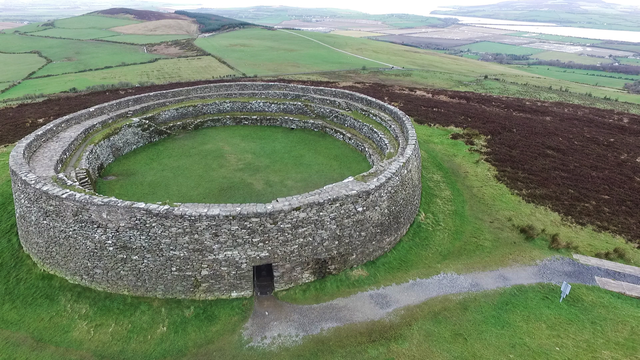
I am grateful for your work. Thanking you 🙏🏽